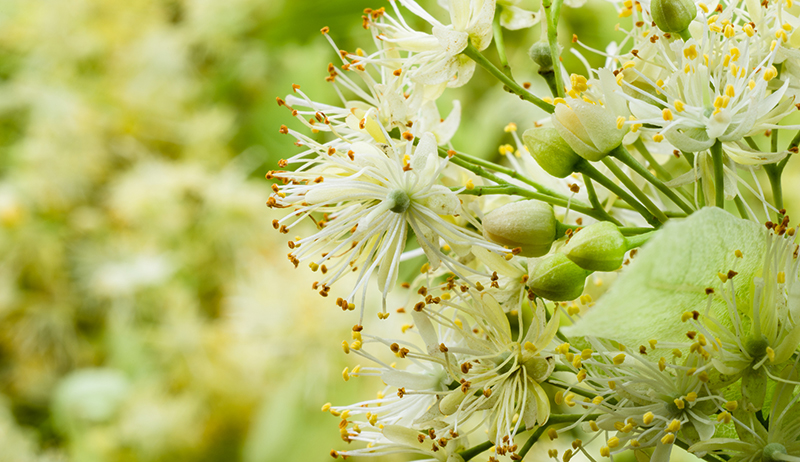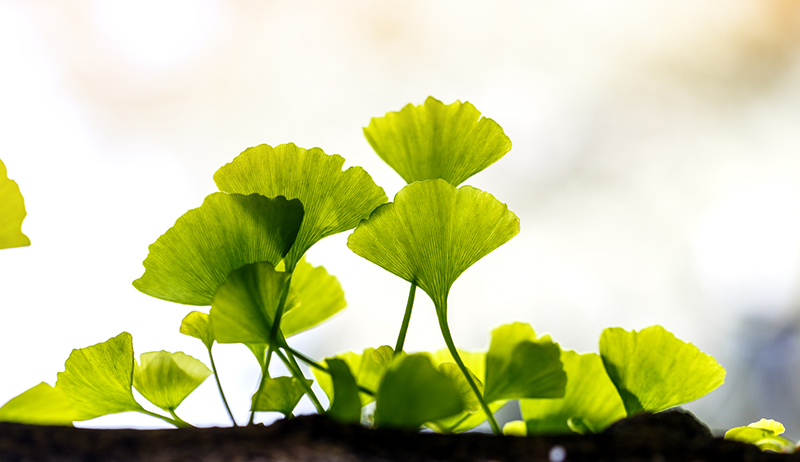
The medicine in trees is not just overlooked when they are used in beautification projects. Sadly, many who look for medicine in their wild spaces often overlook trees, as well. Often called “big medicine” because of their size, trees offer some pretty powerful healing if we use the properly.
It is very important to take medicine from trees in a very conscientious way. Often, it’s the bark that is used and this must be carefully harvested or you could kill a tree while treating an ailment in your body. Be careful not to girdle the tree. Girdling occurs when damage is done in a complete circle around the trunk that goes deep enough into the bark that it cuts off the circulation of water and food from the soil to the leaves above. If you must take bark, look to the need for spring and fall trimming when branches must come off to benefit the tree anyway.
1. Linden (Tillia spp.)
This popular landscaping tree (pictured above) is beloved because it is extremely hardy and can take fairly vicious pruning while continuing to thrive. It is common to come upon these trees in a parking lot or along a residential thoroughfare. Hidden beneath this hardy exterior are many benefits for both humans and bees.
The linden is particularly popular with honeybees, providing nectar and pollen in abundance from their abundant, fragrant flowers, which appear in June and early July. For humans, the linden flower is a well-known heart tonic, alleviating heart palpitations and supporting a healthy cholesterol level and blood pressure. Linden is also loved as a nervous system tonic and a immune system support during winter colds.
2. Redbud (Cercis canadensis)

This beautiful tree grew in abundance where I grew up, all along the hill to the local church. In the spring, its iridescent-pink flowers contrast against the dark bark of its trunk, making it one of our more dramatic landscape design choices.
The bloom of the redbud is actually where the focus of its beneficial characteristics. Luckily, the tree tends to grow short enough to pick these blooms without a ladder. High in vitamin C, these little buds are tart and delicious. They have graced many salads, syrups, vinegars, jellies and even served as garnishes for fancy baked goods in our house.
The immature seed pods, resembling snow peas, give away the family to which the tree belongs. These seed pods are equally delicious. All parts of the redbud are astringent, with the bark of the root being the most so. Redbud has successfully been used to settle stomach issues or irritation, diarrhea, and dysentery.
3. Ginkgo (Ginkgo biloba)

I learned about ginkgo first in college when introduced to a large female of the species that grew on my campus. The female is now largely illegal to plant because of the mess and the stink that go along with the fruit drop each year. However, the ginkgo is a living fossil hiding in common places. The species only contains the one tree and has been actively growing on the earth for 200 million years. We grow it because it has pretty fan-shaped leaves and tolerates the abuse of nearby blacktop heat. In the fall, the leaves turn a brilliant gold and drop en masse. It is the leaves that we concentrate for medicinal compounds.
The ginkgo has quite a reputation for supporting brain health and memory, as well as an important aid in eye health. It is one of the few plants that can carry compounds across the blood-brain barrier.
Look around at the trees that are in your neighborhood. Find their stories in the library. You may be surprised to know what benefits beyond shade and fall color your maples, oaks and arborvitae hold in store for you.




